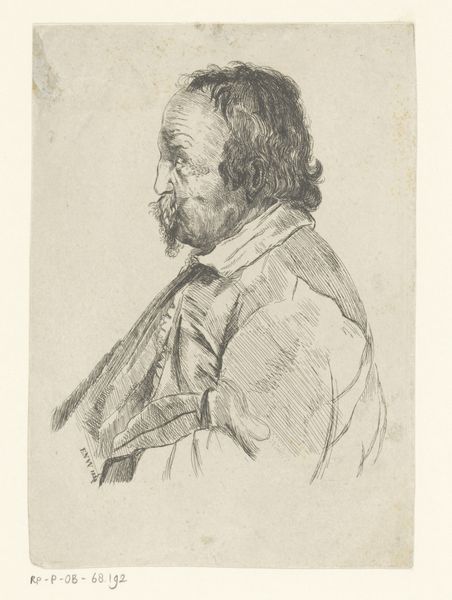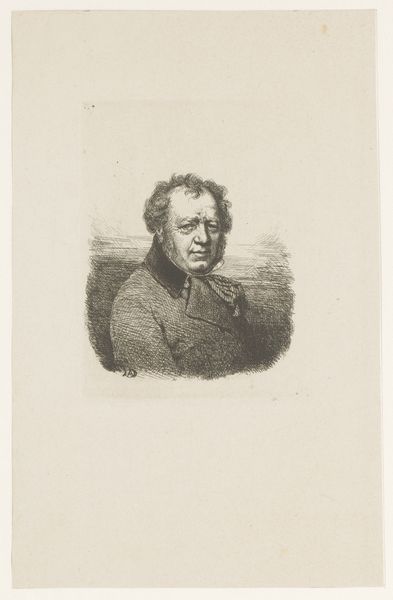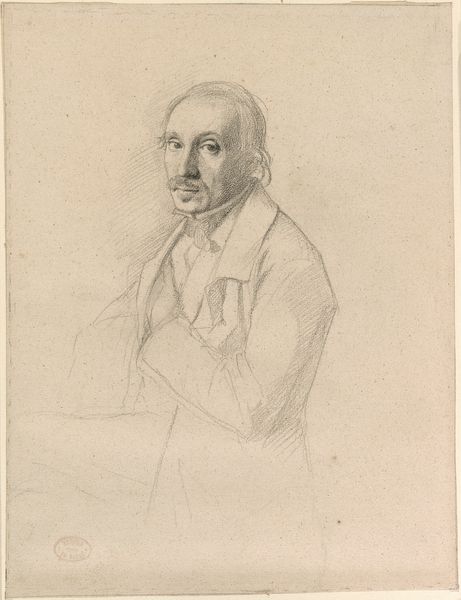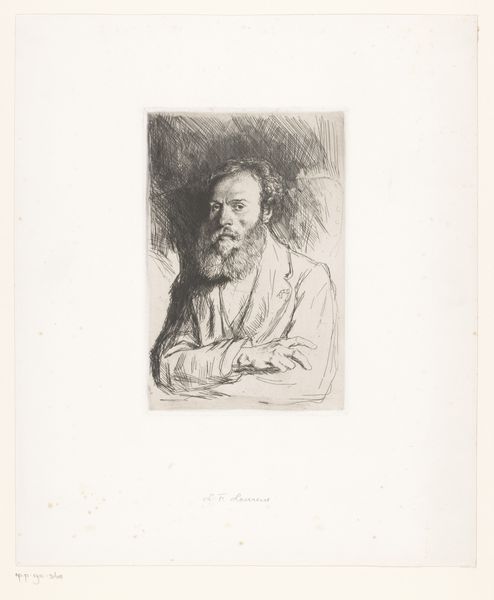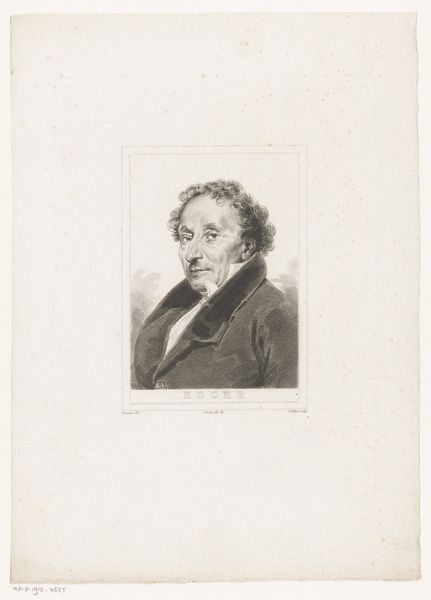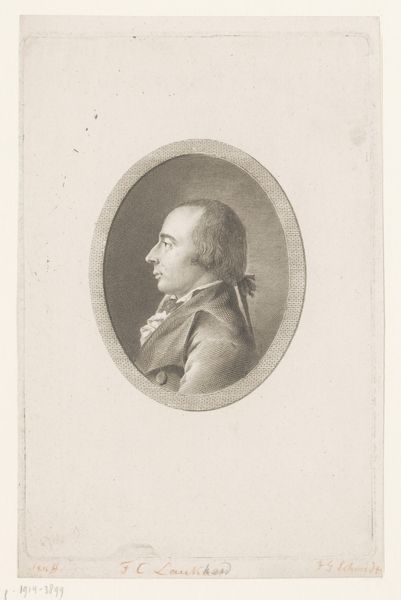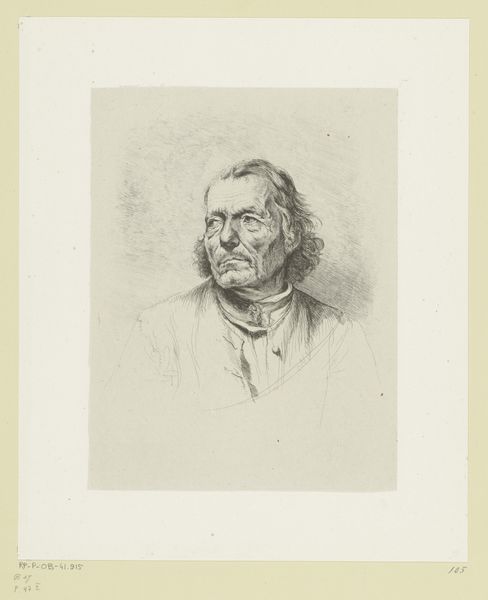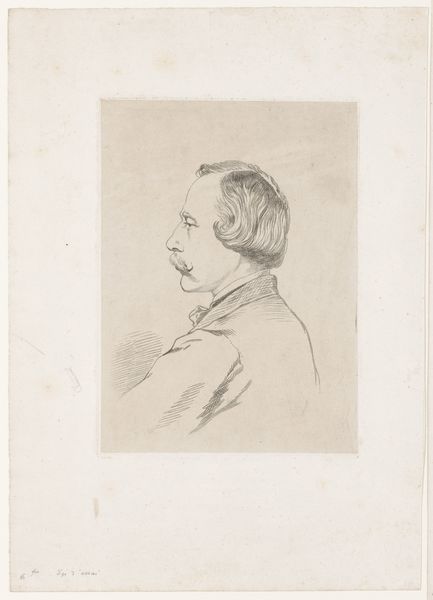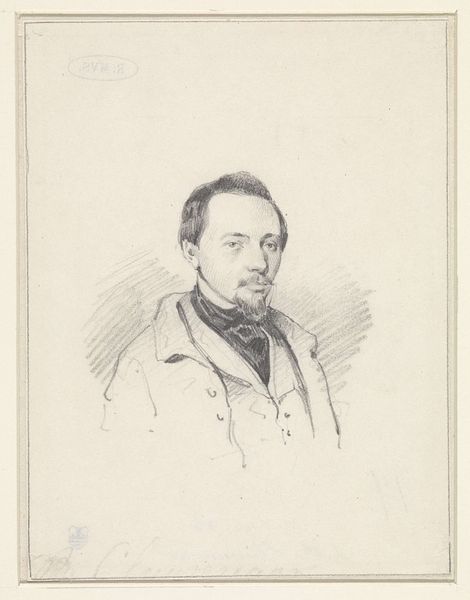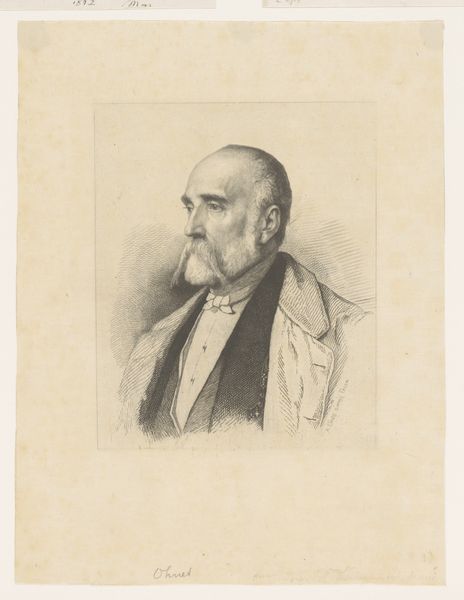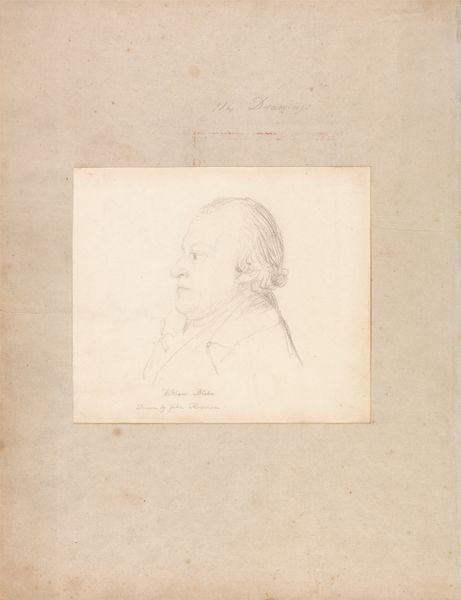
drawing, paper, ink
#
portrait
#
pencil drawn
#
drawing
#
neoclacissism
#
aged paper
#
toned paper
#
light pencil work
#
yellowing background
#
pencil sketch
#
old engraving style
#
figuration
#
paper
#
ink
#
line
#
pencil work
#
academic-art
Dimensions: height 196 mm, width 145 mm
Copyright: Rijks Museum: Open Domain
Curator: So, here we have “Borstbeeld van een oude man,” or "Bust of an Old Man," a drawing by Adam von Bartsch, created around 1803. It's part of the Rijksmuseum's collection. Editor: What strikes me immediately is the frailty, you know? It's rendered in such delicate lines. The paper itself seems aged, which somehow enhances the sense of time and passing. It’s a lovely kind of visual echo. Curator: Absolutely. Bartsch was working within a Neoclassical style here, emphasizing line and form. This drawing serves as a great example of the academic art tradition, focusing on detailed observation. The aging of the paper itself, from pristine white to a mellow yellow, is of course part of the appeal. Editor: I am strangely moved by the sitter's expression. It’s a mix of weariness and wisdom, maybe? The way the light pencil work defines the wrinkles around his eyes, each line feels intentional, adding depth to the portrait. Does the museum archive any context on his symbolism? Curator: Unfortunately, not much is known about the specific sitter here, or why Bartsch chose to draw him. The style and presentation suggest it was likely intended as a study piece, perhaps meant to capture the essence of an older, perhaps noble, figure. Editor: Right. This resonates because in a way, the passage of time itself is what becomes symbolic, right? The yellowing paper tells us something too. If anything, to me, that's like cultural memory, even without knowing this old man. Curator: I think that’s a fair assessment. There's something inherently compelling about portraits of older individuals. They represent the accumulation of experiences. Editor: Mmm. And those tiny details become so crucial. I just noticed how carefully his hands are rendered. What about his eyes? The slight downturn communicates such resignation. Curator: And Bartsch is economical with his marks – achieving the desired effects with very light and precise line work. As you suggest, so much is conveyed in such subtle terms. It makes it difficult to just walk by this piece without contemplating a much longer moment, you know? Editor: True, you can't help but stop and think... thank you for taking me through this piece! It has given me food for thought. Curator: My pleasure. It has been fun sharing my perspective about it with you.
Comments
No comments
Be the first to comment and join the conversation on the ultimate creative platform.
